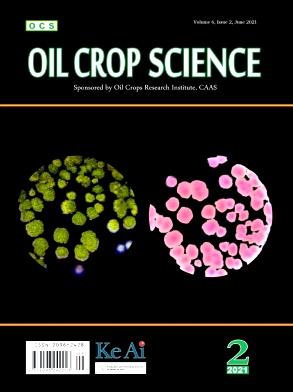Analysis of the effect of temperature and packing method on the quality and oxidative stability of walnuts in storage
Q3 Agricultural and Biological Sciences
引用次数: 0
Abstract
Walnuts are rich in a variety of nutritional components. However, due to their high content of unsaturated fatty acids (UFAs), the quality of walnuts tends to decline during storage, which adversely affects the development of the walnut industry. This study was aimed to investigate the impacts of temperature and packaging methods on the storage quality and oxidative stability of walnuts. The Wen 185 walnut variety was selected, and the physical-chemical and nutritional indexes of walnuts stored for 42 weeks under different temperatures (−18 °C, 4 °C, and room temperature) and packaging methods (vacuum light-exposed, vacuum light-proof, vacuum-radiation light-exposed, vacuum-radiation light-proof, nitrogen-filled light-exposed, nitrogen-filled light-proof) were measured. The results showed that low temperatures, especially −18 °C, in combination with vacuum lightproof packaging, could effectively suppress the increase in oxidative stability indicators such as acid value (AV) and peroxide value (PV), and maintain high retention rates of nutritional indicators like tocopherol and phytosterol. This study has elucidated that low temperatures and appropriate packaging methods play the crucial roles in maintaining the quality and oxidative stability of walnuts during storage. It has provided comprehensive and valuable data support and theoretical basis for the scientific storage of walnuts, contributing to the development of the walnut industry and the guarantee of product quality.
温度和包装方式对核桃贮藏品质及氧化稳定性的影响分析
核桃富含多种营养成分。然而,由于核桃中不饱和脂肪酸(UFAs)含量高,在贮藏过程中核桃的品质有下降的趋势,对核桃产业的发展造成不利影响。本研究旨在探讨温度和包装方式对核桃贮藏品质和氧化稳定性的影响。选取文185核桃品种,在不同温度(- 18℃、4℃、室温)和不同包装方式(真空光暴露、真空防光、真空辐射光暴露、真空辐射防光、充氮光暴露、充氮光暴露)下,测定核桃42周的理化指标和营养指标。结果表明,低温特别是- 18℃结合真空避光包装,可以有效抑制酸值(AV)和过氧化值(PV)等氧化稳定性指标的增加,并保持生育酚和植物甾醇等营养指标的高保存率。研究表明,低温和适当的包装方法对保持核桃贮藏期间的品质和氧化稳定性起着至关重要的作用。为核桃的科学贮藏提供了全面而有价值的数据支持和理论依据,为核桃产业的发展和产品质量的保证做出了贡献。
本文章由计算机程序翻译,如有差异,请以英文原文为准。
求助全文
约1分钟内获得全文
求助全文
来源期刊

Oil Crop Science
Food Science, Plant Science, Agronomy and Crop Science
CiteScore
3.40
自引率
0.00%
发文量
20
审稿时长
74 days
 求助内容:
求助内容: 应助结果提醒方式:
应助结果提醒方式:


